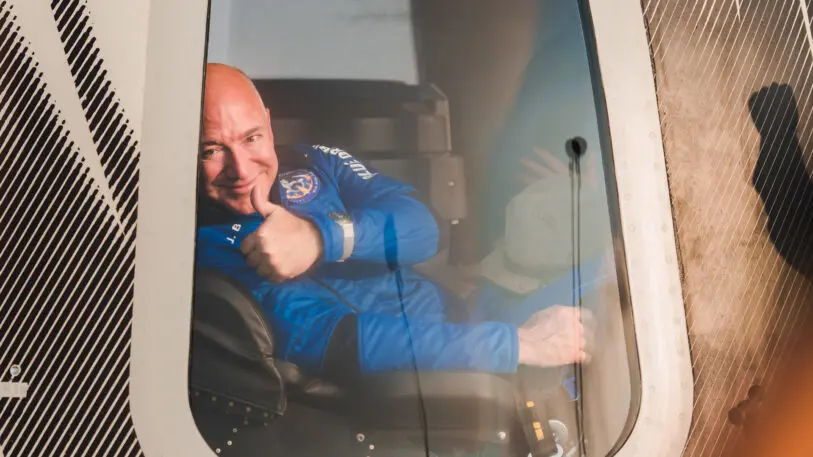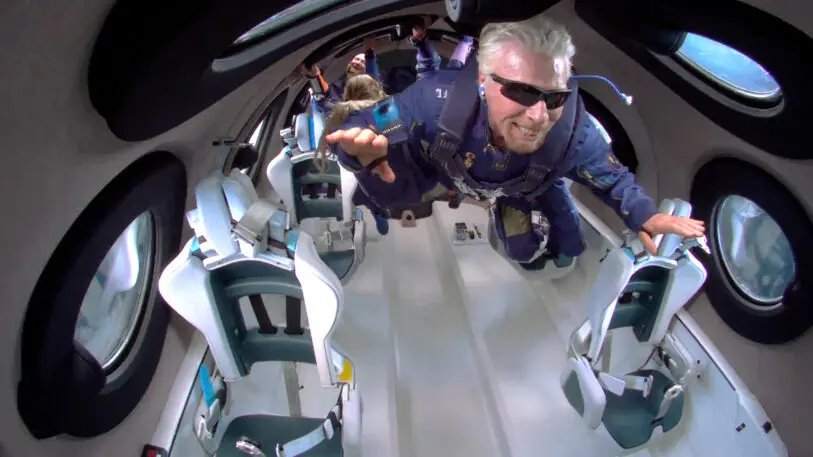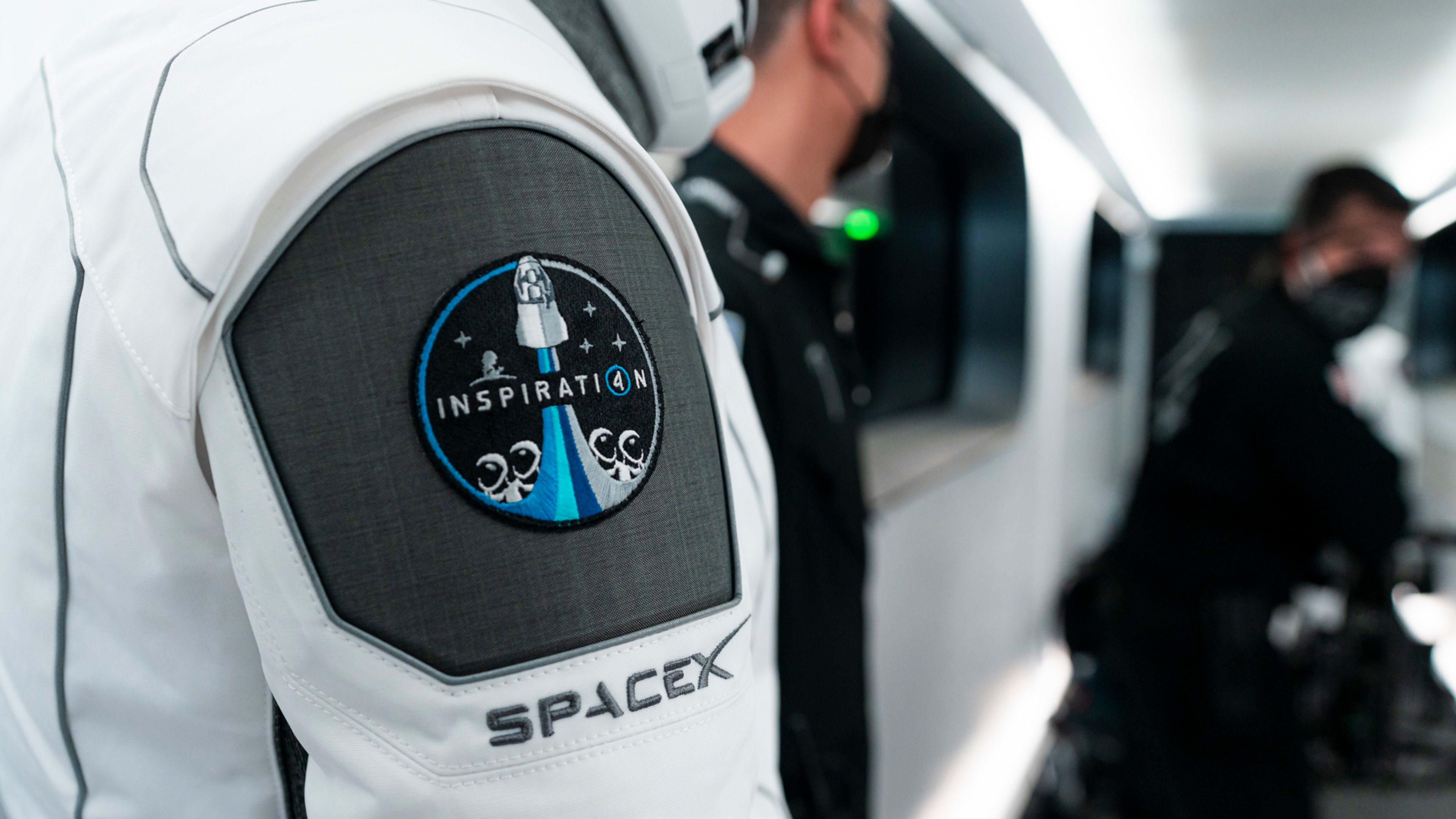Remarkable engineering progress has made space tourism a practical pastime for billionaires. But it’s too early to say whether it will ever become a financially feasible endeavor for mere millionaires—much less anybody with a net worth below seven figures.
The next small step in a journey that began with American businessman Dennis Tito’s 2001 flight to the International Space Station on a Russian Soyuz spacecraft (for which he paid a reported $20 million) certainly doesn’t look like one giant leap for the democratization of spaceflight: Axiom-1, the first all-private mission to the ISS that’s set to launch April 3 from the Kennedy Space Center on a SpaceX Falcon 9 rocket and Dragon spacecraft, features a four-person crew, three of whom—investors Larry Connor, Mark Pathy, and Eytan Stibbe—paid $55 million each for a spot onboard. (The fourth, Michael López-Alegría, is a former NASA astronaut and a vice president at Houston’s Axiom Space.)
Yet, that’s done little to dim industry insiders’ enthusiasm for space tourism’s outlook. At last week’s Satellite 2022 conference in Washington, for example, space industry executives urged audiences to take a longer-term view of space tourism while shying away from the optimistic forecasts of non-government spaceflight’s number-one advocate, SpaceX founder Elon Musk.
“I think that tourism is a really important part of building out the space economy,” said Ariane Cornell, head of commercial and international sales at Blue Origin, during a panel Monday. “Sometimes people pooh-pooh it, but look at the barnstomers 100 years ago in commercial aviation.”
Blue Origin’s New Shepard suborbital rocket and its six-seat capsule have conducted three crewed missions—the first including Blue Origin and Amazon founder Jeff Bezos, the second featuring Star Trek actor William Shatner. The next launch is scheduled for March 29.

Relatively cheaper spaceflight is available from Virgin Galactic, whose eight-seat spaceplane VSS Unity took founder Richard Branson and others on a suborbital hop last July. Virgin’s published fare is $450,000, up from $250,000 earlier.
“We have over 600 people signed up to fly,” Sirisha Bandla, vice president of government affairs said during the panel, adding that some customers want repeat flights.
She would know why: Bandla was one of Branson’s fellow passengers on that flight, which she called “a very transformative journey.”
Blue and Virgin’s current vehicles offer only a few minutes of seeing Earth from space and floating in microgravity. SpaceX’s Dragon can spend days in orbit—as it did during last year’s private Inspiration4 mission and will during the upcoming private Polaris Dawn mission—but doesn’t offer much personal space.

“There has to be private investment, not just to go after the government market but to go after these commercial markets,” NASA project executive Dennis Stone said in a lunchtime presentation Monday.
In December, the space agency awarded a combined $415.6 million to Blue Origin, Houston-based Nanoracks and Dulles, Virgina-based Northrop Grumman to develop ISS successors. Stone said this will lead to an “open competition by NASA to purchase destination service” no earlier than 2026.
Meanwhile, Axiom Space is already building an ISS add-on—featuring accommodations partly drawn up by designer Philippe Starck—that can later be detached to fly on its own.
“There’s lots of commercial applications,” said Clay Mowry, chief revenue officer at Voyager Space Holdings, a Northrop Grumman partner. “The most common one that you hear here is tourism.”
Blue Origin’s Orbital Reef, a facility it plans to build with Louisville, Colorado, Sierra Space, looks the most like a space hotel with its giant windows.
Crew transport will come via Sierra Space’s Dream Chaser, a spaceplane now projected to begin ISS cargo runs in early 2023–a slip from the 2022 timeline Sierra shared in January when it brought a Dream Chaser mock-up to CES.
Schedule delays, however, are one price of flight safety, as panelists noted in almost identical language.
“We don’t fly our rockets and our spacecraft until we’re ready,” Cornell said.
“We’re not going to launch until we’re ready,” Bandla added.
(Virgin Galactic lost an earlier spaceplane in a 2014 crash that the National Transportation Safety Board traced to a test pilot deploying its “feather” aerodynamic braking system too soon. The Federal Aviation Administration later temporarily grounded Virgin after Branson’s test flight briefly departed its permitted airspace.)
That emphasis on safety as well as the inherent difficulty of getting to space means none of this will be cheap. But for private space travel to fly, it also can’t be nearly as costly as NASA’s operations today.
“You can’t be repairing a toilet once a week,” said John Roth, a vice president of strategy and business development at Sierra, said during the panel. As a result, Orbital Reef will lean less on human maintenance: “You’ve gotta have robotics.”
Scaling up spaceflight should also help drive down costs.
“You’re going to start this virtuous cycle,” Cornell said. “It is a long-term play, absolutely, but you have to start now.”
Patient capital will also be a must. Most of these new-space firms are privately-held, but Virgin Galactic is not—and its latest quarterly filing shows that it lost $353 million on revenue of $3.3 million in 2021.
Ars Technica reporter Eric Berger estimated afterward that Virgin would need to launch 100 flights a year to break even, an unprecedented pace.
In a quick chat after the panel, Bandla said Virgin has even higher aspirations—400 launches a year, some providing point-to-point transportation around Earth–to allow a lower price tag.
“The goal is to reach a high cadence of flights and see that figure go down,” she said. “But I can’t give you a number.”
Recognize your brand’s excellence by applying to this year’s Brands That Matter Awards before the early-rate deadline, May 3.
